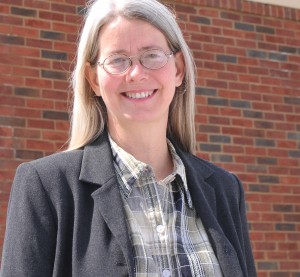Carolyn Hoagland was recently awarded the Volkswagen Distinguished Scholar for her work in learning about how farmers choose to grow bioenergy crops. Hoagland, an adult student, is an environmental science major at the University of Tennessee at Chattanooga (UTC). She conducted her research while working as an intern at the Oak Ridge National Laboratory. Hoagland found that many aspects of farmers’ choices as well as U.S. farm policy are complex. However, she determined that high quality farm ground is unlikely to be converted to cellulosic energy crops if farmers are concerned about making a profit.
 “Most ethanol produced in the U.S. is currently made from corn grain, and the government would like to limit that process and encourage ethanol to be produced instead from non-food crops like switchgrass or hybrid poplar,” said Hoagland. “These poor quality acres can sometimes be profitably converted to switchgrass or other energy crops, but only if a biorefinery is nearby to buy the biomass energy crop.”
“Most ethanol produced in the U.S. is currently made from corn grain, and the government would like to limit that process and encourage ethanol to be produced instead from non-food crops like switchgrass or hybrid poplar,” said Hoagland. “These poor quality acres can sometimes be profitably converted to switchgrass or other energy crops, but only if a biorefinery is nearby to buy the biomass energy crop.”
The USDA has programs in place to encourage farmers to grow bioenergy crops including the Biomass Crop Assistance Program (BCAP). However, this program is in jeopardy when at the beginning of June, the Senate voted to discontinue any funding for the program in 2012. The bill still needs to go to the House for vote but the industry is confident that it will look much different than the Senate version.
Hoagland presented her research during the Annual Meeting and International Research Conference of Sigma Xi, the Scientific Research Society in Raleigh, North Carolina. She has been studying energy for more than a decade.
“Getting the internship changed my life. In class, it helped me see the big picture. When you’re taking a 300 or 400-level class, it’s hard to put the information into context, but if you’ve completed an internship, when the information is presented, you can understand it UTC had been very welcoming place for adult students,” Hoagland concluded.

